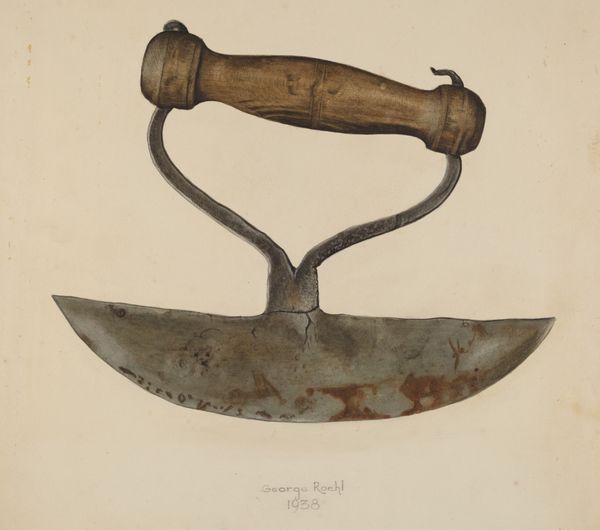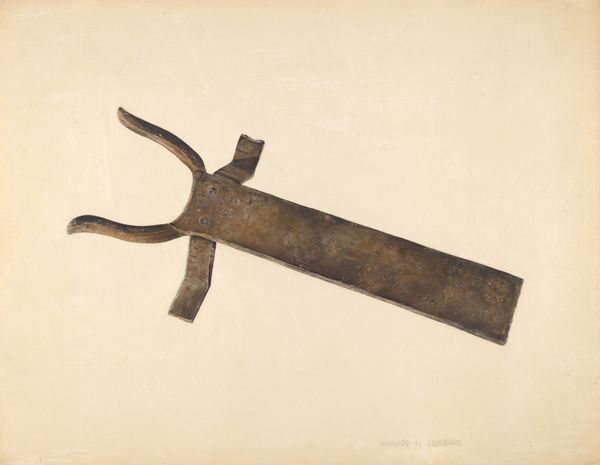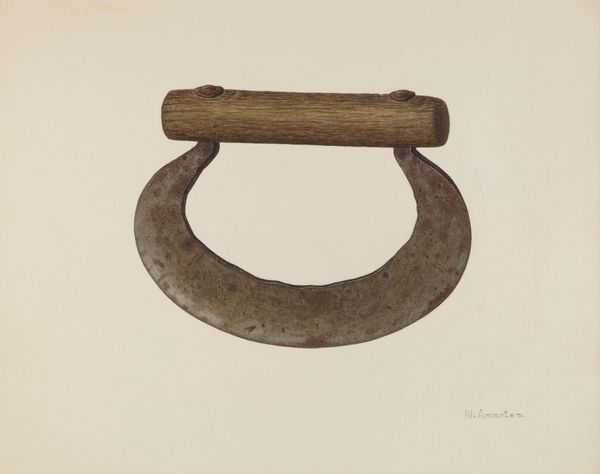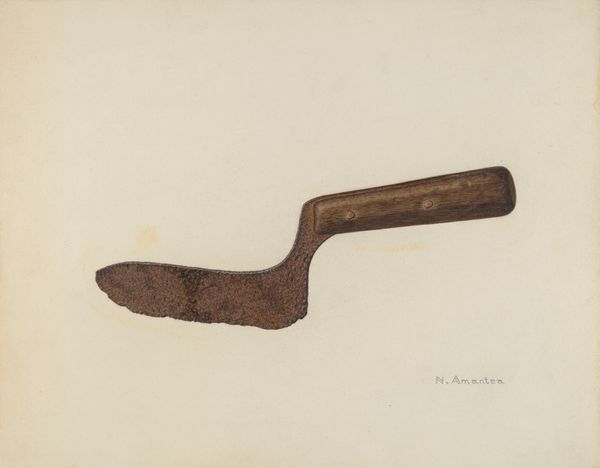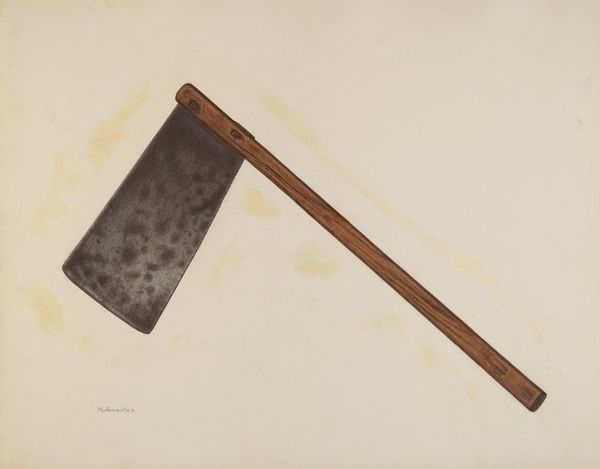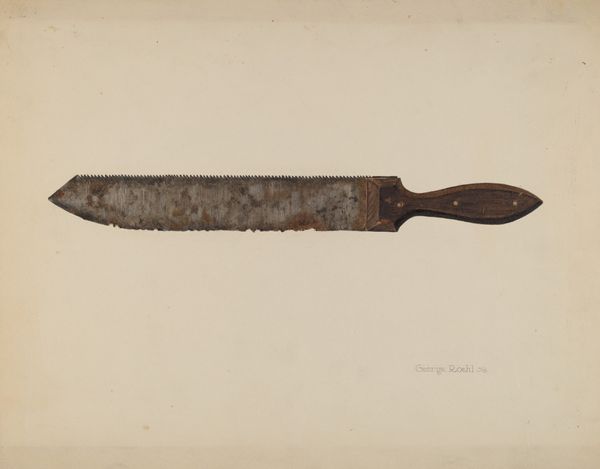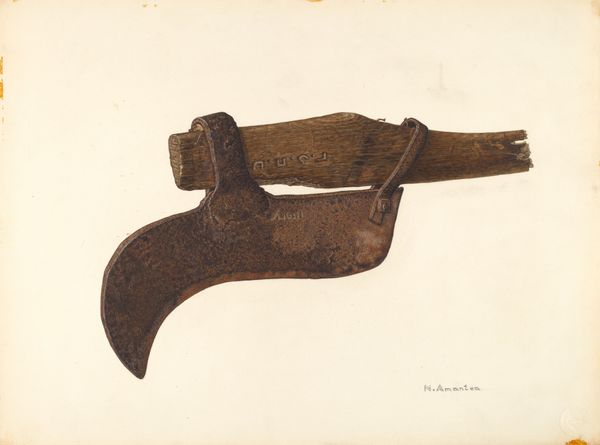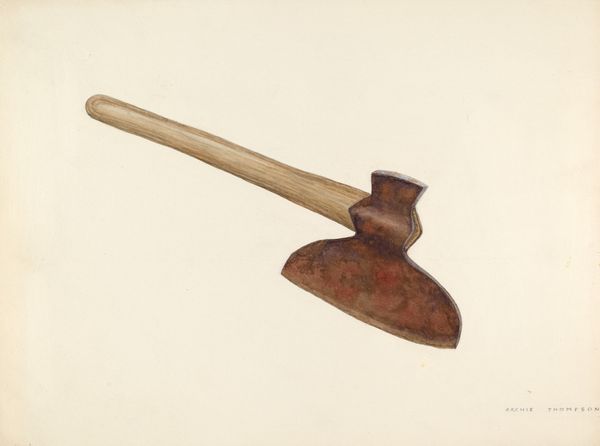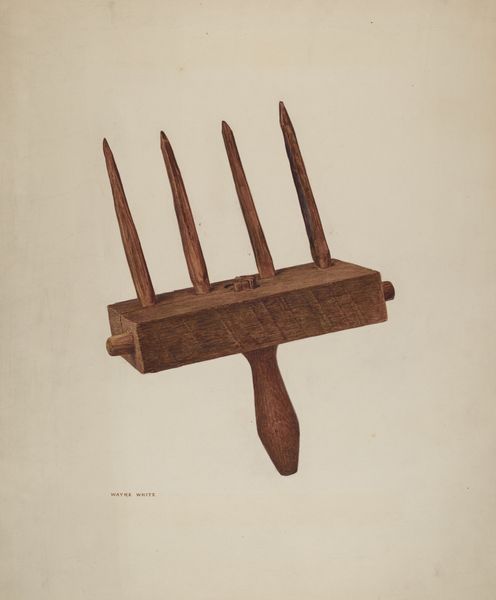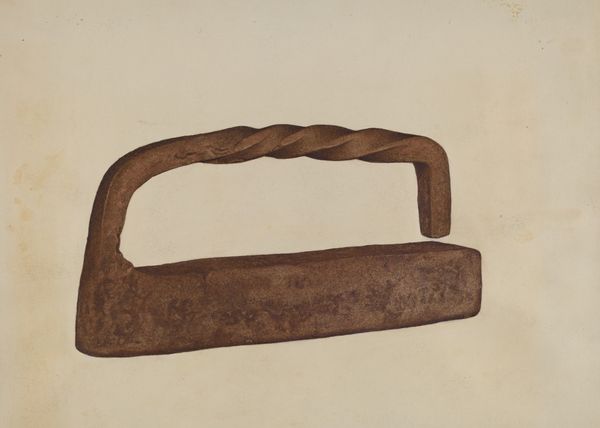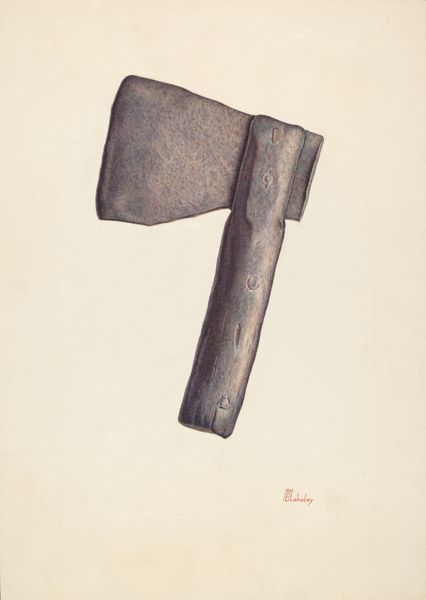
drawing, pencil, graphite
#
drawing
#
charcoal drawing
#
pencil drawing
#
pencil
#
graphite
#
realism
Dimensions: overall: 24.2 x 33.1 cm (9 1/2 x 13 1/16 in.)
Copyright: National Gallery of Art: CC0 1.0
Editor: Here we have "Chopping Knife," rendered in graphite and pencil around 1941 by Herman Schulze. It's… striking, in its simplicity. The rust and wear are so detailed, it's like the artist wanted us to really *see* this ordinary object. What jumps out at you? Curator: Well, isn’t it something, how a humble tool can become almost monumental through art? Schulze's chosen to immortalize this chopping knife, this everyday relic, with such dedication. It's not just *what* he’s drawn, but how: the loving detail in the rust, the way the light catches on the worn wood... almost as though he were conferring upon it some inherent, previously invisible dignity, don’t you think? Do you find a particular poignancy in the choice of subject? Editor: I do see that. The object itself isn’t beautiful, but the *drawing* is. Is he making a comment on valuing simple, perhaps forgotten, things? Curator: Precisely! And, perhaps, a broader commentary on American identity, wouldn't you agree? This tool likely evokes a sense of nostalgia. It almost suggests stories of home cooking, passed down skills… Do you feel it has those qualities of memory associated to it, or am I off on a tangent? Editor: No, not at all. I get that sense of history too, a quiet echo of earlier times, even though it’s a simple kitchen utensil. Curator: Perhaps Schulze is subtly nudging us to find the extraordinary within the ordinary, a kind of visual poetry blooming amidst the mundane. It’s rather lovely when you pause and actually consider it. Editor: Definitely given me a new way to look at drawings, and at chopping knives! Curator: Me too! Art is such a marvelous adventure when one lets it wander.
Comments
No comments
Be the first to comment and join the conversation on the ultimate creative platform.

